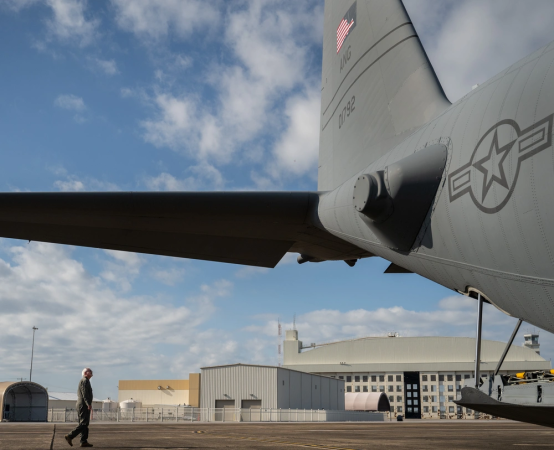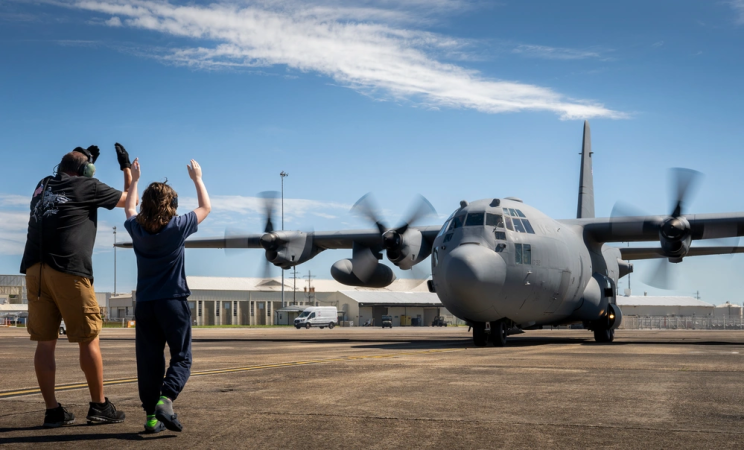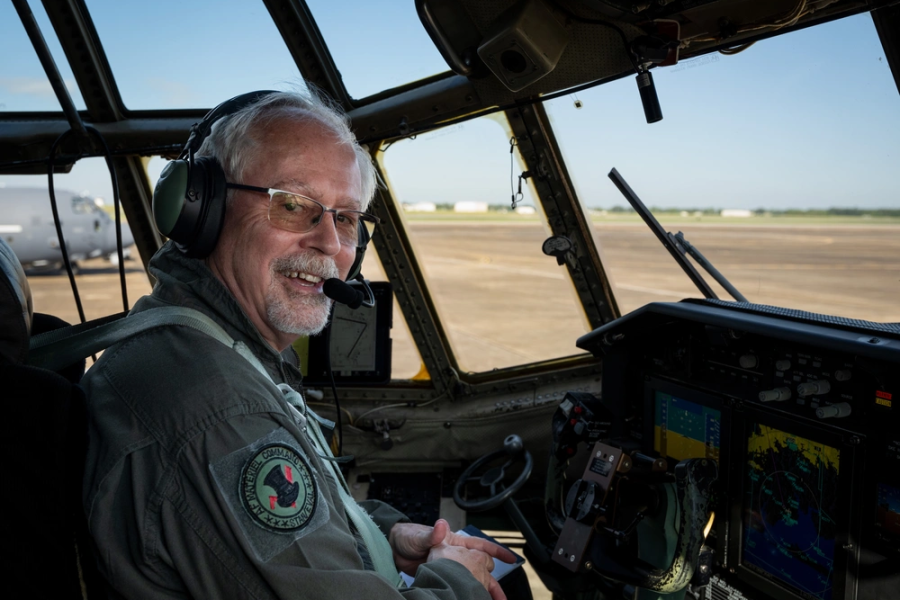If there were a permanent residency requirement for the C-130, Gary Hogg has hit it multiple times over. The retired Air Force lieutenant colonel and current test pilot at Eglin Air Force Base, Fla. recently eclipsed 10,000 flight hours flying the transport plane, equivalent to about 416 days spread across a 41-year career.
“It’s a milestone in a career I never knew was possible, but I am so thankful I had the chance to live it,” the 65-year-old said in a recent press release from Eglin’s 96th Test Wing. “When I stop to think about the last 40-plus years, I know I have truly been blessed.”
It all started on Nov. 23, 1983, when the Air Force Academy graduate and Kentucky native first took off from Little Rock Air Force Base, Ark., during qualification training on the C-130 Hercules, affectionately known as the “Herk.” Hogg originally wanted to fly the RF-4 reconnaissance fighter or the A-10 attack jet, but working with a crew on the C-130 won him over.
“It was more than adventure,” he said in the release. “I knew the C-130 was the right decision for me. I loved the concept of flying with a crew and the way everyone worked together to get the mission done.”

After training, it was on to a tour in Europe. Then, starting in 1988, he flew special operations missions aboard the C-130E and MC-130E Combat Talon variants. Like its newer MC-130J cousins today, the MC-130E was equipped with aerial refueling pods to fill up special operations and search and rescue helicopters.
Those pods came in handy during a particularly difficult mission in 1993, where Hogg flew an MC-130E supporting 14 MH-53 Pave Low helicopters en route to Haiti. When heavy thunderstorms separated a helicopter from the formation, Hogg and his crew found it and gave the Pave Low enough fuel to make it to Haiti, but it left the MC-130E so low that they had to divert to Key West, Fla.
Nothing was easy that day; storms had taken out power across the island, making it difficult to land the $75 million aircraft. Well below emergency fuel levels, Hogg’s first two landing attempts were unsuccessful, but on the third he finally made it, which was fortunate since he did not have enough gas for a fourth.
Hogg went on to fly in Air Force Special Operations Command’s standards and evaluation division, then do flight testing at Robins Air Force Base, Ga. He flew most of the military’s C-130 variants before arriving at Eglin as a lieutenant colonel in 2004, where he retired but kept working the same job as a civilian test pilot.
In the 20 years since then, flying the C-130 is still a treat for Hogg, who is now the standardization and evaluation command chief pilot at Air Force Materiel Command’s Detachment 1.
“Each model and variant can execute so many different missions, it is impossible to get bored with doing the same thing all the time,” he said.
That’s good for Hogg’s younger colleagues at Det. 1 and the 417th Flight Test Squadron who get to learn from his four decades behind the yoke.
“He’s absolutely a source of continuity here,” said Det. 1 commander Col. Brian Taylor. “He has experience flying every Air Force C-130 variant, and our unit leverages that experience and his relationships with the operational units, to oversee the diverse mission sets of the C-130 operations.”
Hogg crossed the 10,000 hour mark on Sept 24 in an MC-130H during a routine avionics modernization test mission. After landing, his 11-year-old grandson, Anthony Lindstrom, helped marshal him to a parking spot where Hogg’s friends and family congratulated him.
“The thought that keeps coming to me is how much I enjoy the team that it takes to fly a C-130,” he said. “A smooth-running team is just pure joy in the air.”

